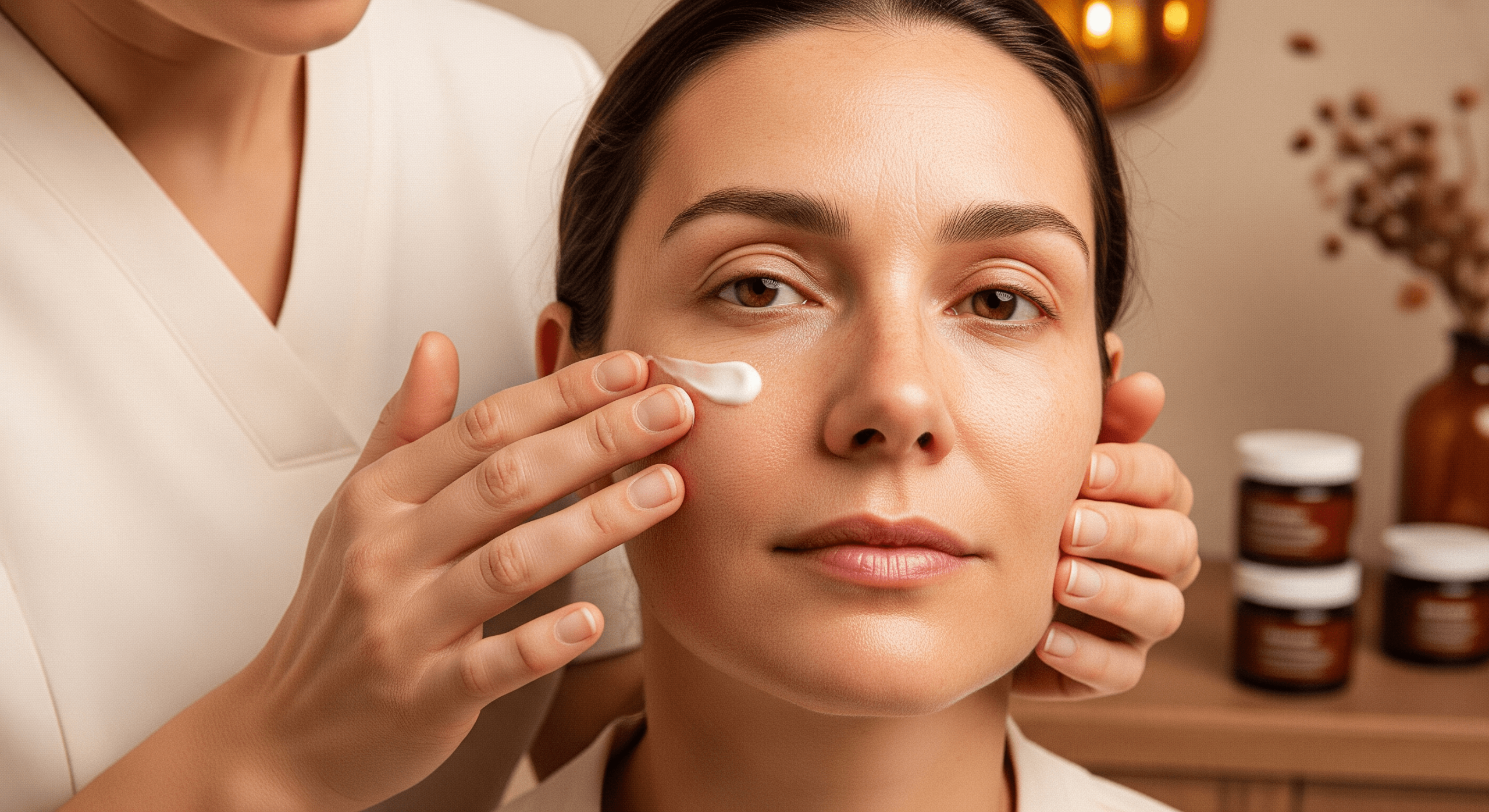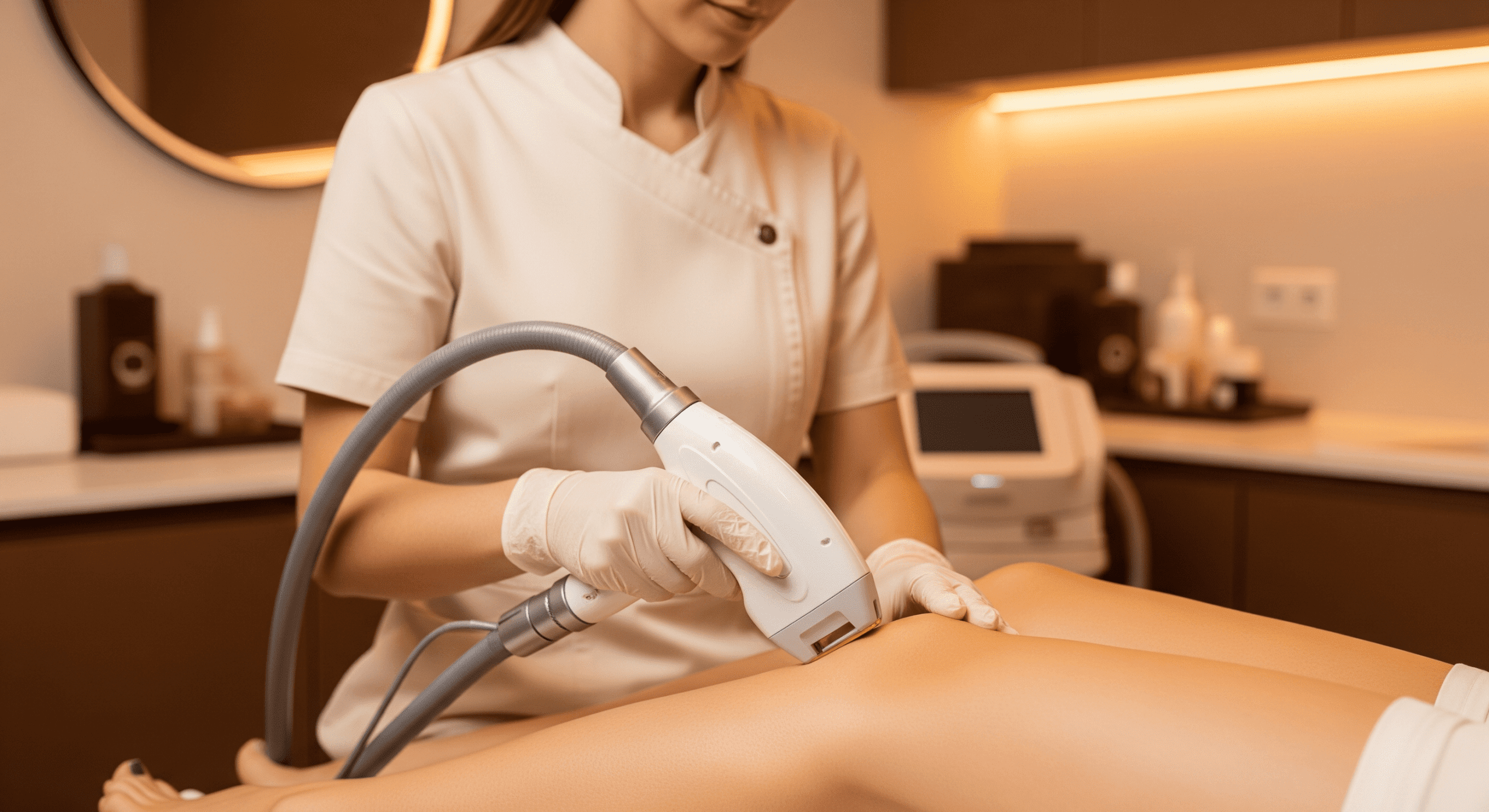From A-list celebrities dipping into sub-zero chambers to influencers touting icy facials on TikTok, cryotherapy for skin health has officially entered the skincare spotlight. But beyond the buzz, what’s actually happening beneath the frozen surface? Is this chill trend a passing craze, or is it backed by real science that could reshape how we approach skincare?
This blog deep-dives into cryotherapy’s benefits, how it works, who it’s for, and where it might be headed. Whether you’re a skincare devotee or just frost-curious, let’s break the ice on what’s fact and what’s fluff.
Jump To:
TLDR – Quick Guide
- What is Cryotherapy?
A skin treatment involving exposure to extremely cold temperatures to stimulate skin repair, reduce inflammation, and boost collagen. - Benefits:
Reduces puffiness, tightens pores, improves circulation, boosts radiance, and potentially supports anti-aging. - Risks:
Includes redness, numbness, or in rare cases, frostbite or nerve damage if improperly administered. - Scientific Backing:
Early studies support many benefits, but long-term data is still limited. - Final Verdict:
A promising treatment with growing popularity, especially when used in conjunction with other proven skincare methods.
Detailed Breakdown
What Is Cryotherapy and How Does It Work?
Cryotherapy uses ultra-low temperatures—ranging from -200°F to -250°F—for brief periods (typically 2-4 minutes) to stimulate blood flow and inflammatory responses. For skin, this means improved oxygenation, better nutrient delivery, and tighter pores.
There are several forms:
- Whole-body cryotherapy (WBC): You step into a chamber for full-body exposure.
- Localized cryotherapy: Cold air or nitrogen is directed at the face or specific areas.
- Cryofacials: A spa-style service focusing on the face to tone, reduce swelling, and boost collagen.
The Benefits of Cryotherapy for Skin Health
Let’s unpack the ice chest of skin benefits:
- Reduces Puffiness and Inflammation
Cold therapy is a well-known vasoconstrictor. Applied to the skin, it reduces swelling and redness—ideal for post-treatment recovery or acne flare-ups. - Improves Skin Tone and Texture
Boosted circulation from cold exposure delivers more oxygen and nutrients to skin cells, giving your face a post-frost glow. - Stimulates Collagen Production
The sudden temperature drop prompts your skin to go into “repair mode,” triggering collagen synthesis that improves firmness and elasticity over time. - Shrinks Pores and Tightens Skin
Cold constricts pores and helps reduce oiliness. This makes cryotherapy popular for those battling oily or acne-prone skin. - May Help Manage Skin Conditions
Preliminary studies suggest cryotherapy can soothe symptoms of eczema and psoriasis by calming overactive immune responses (source).
Is Cryotherapy Safe?
Generally, yes—with a big asterisk.
When performed by trained professionals and used in moderation, cryotherapy has minimal side effects. But risks include:
- Temporary numbness
- Redness or skin irritation
- Rare frostbite or nerve damage if safety protocols aren’t followed
Always consult with a dermatologist, especially if you have existing skin conditions or sensitivities.
Is the Hype Justified by Science?
A 2020 review published in the Journal of Clinical and Aesthetic Dermatology concluded that cryotherapy for skin health shows “promising results” for rejuvenation and inflammation reduction, though large-scale, long-term studies are still lacking (source).
What we know:
- Short-term benefits are real (especially anti-inflammatory and cosmetic).
- Long-term anti-aging claims are still under review.
- It’s most effective when combined with holistic skincare routines, not used as a standalone miracle fix.
Key Takeaways
- Cryotherapy for skin health is more than a passing fad—it has real, measurable effects on inflammation, tone, and collagen production.
- While not a cure-all, it’s an exciting addition to a modern skincare routine, especially when used responsibly.
- The science is encouraging but still developing—so think of it as a powerful support player, not the whole skincare team.
- For best results, pair cryotherapy with dermatologist-approved treatments and products tailored to your skin type.
Looking to try it? Start with a cryofacial at a licensed med spa. Just don’t forget your moisturizer—your skin’s going from Arctic to cozy in minutes.
FAQs
1. How often should I get cryotherapy for my skin?
1–2 sessions per week are generally recommended for visible results, but it varies based on your skin type and goals. Always follow professional advice.
2. Can cryotherapy help with acne?
Yes—its anti-inflammatory effects can calm acne flare-ups and reduce redness, but it won’t replace acne medication or medical treatment.
3. Is cryotherapy painful?
It’s intense but not painful. Most people describe it as a “tingling chill” that ends quickly. Facial cryotherapy is much gentler than whole-body sessions.
4. Can I do cryotherapy at home?
DIY methods like ice rollers or cold plunges can mimic some benefits, but professional cryotherapy offers far more targeted and potent effects.
5. Who should avoid cryotherapy?
Those with severe Raynaud’s disease, nerve damage, or cold-triggered conditions should steer clear. Always consult with a healthcare provider before trying it.


